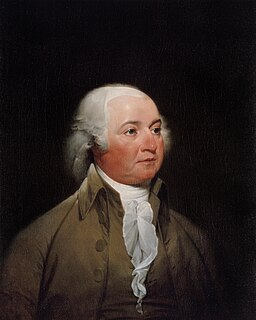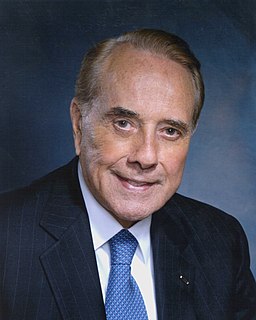
The United States presidential election of 1792 was the second quadrennial presidential election. It was held from Friday, November 2 to Wednesday, December 5, 1792. Incumbent President George Washington was elected to a second term by a unanimous vote in the electoral college, while John Adams was re-elected as vice president. Washington was essentially unopposed, but Adams faced a competitive re-election against Governor George Clinton of New York.

The United States presidential election of 1796 was the third quadrennial presidential election. It was held from Friday, November 4 to Wednesday, December 7, 1796. It was the first contested American presidential election, the first presidential election in which political parties played a dominant role, and the only presidential election in which a president and vice president were elected from opposing tickets. Incumbent Vice President John Adams of the Federalist Party defeated former Secretary of State Thomas Jefferson of the Democratic-Republican Party.

The United States presidential election of 1812, the seventh quadrennial American presidential election, was held from Friday, October 30, 1812 to Wednesday, December 2, 1812. Taking place in the shadow of the War of 1812, incumbent Democratic-Republican President James Madison defeated DeWitt Clinton, who drew support from dissident Democratic-Republicans in the North as well as Federalists. It was the first presidential election to be held during a major war involving the United States.

The United States presidential election of 1820 was the ninth quadrennial presidential election. It was held from Wednesday, November 1, to Wednesday, December 6, 1820. Taking place at the height of the Era of Good Feelings, the election saw incumbent Democratic-Republican President James Monroe win re-election without a major opponent. It was the third and last United States presidential election in which a presidential candidate ran effectively unopposed. It was also the last election of a president from the Revolutionary generation.
In United States presidential elections, an unpledged elector is a person nominated to stand as an elector but who has not pledged to support any particular presidential or vice presidential candidate, and is free to vote for any candidate when elected a member of the Electoral College. Presidential elections are indirect, with voters in each state choosing electors on Election Day in November, and these electors choosing the President of the United States and Vice President of the United States in December. Electors today are elected in every state by popular vote, and in practice have since the 19th century almost always agreed in advance to vote for a particular candidate — that is, they are said to have been pledged to that candidate. In the 20th century, however, several elections were contested by unpledged electors, who made no pledge to any candidate before the election. These anomalies largely arose over fissures within the Democratic Party over the issues of civil rights and segregation. No serious general election campaign has been mounted to elect unpledged electors in any state since 1964.

In United States presidential elections, a faithless elector is a member of the United States Electoral College who does not vote for the presidential or vice presidential candidate for whom they had pledged to vote. That is, they break faith with the candidate they were pledged to and vote for another candidate, or fail to vote. A pledged elector is only considered a faithless elector by breaking their pledge; unpledged electors have no pledge to break.

The election of president and vice president of the United States is an indirect election in which citizens of the United States who are registered to vote in one of the 50 U.S. states or in Washington, D.C. cast ballots not directly for those offices, but instead for members of the U.S. Electoral College, known as electors. These electors then in turn cast direct votes, known as electoral votes, for president, and for vice president. The candidate who receives an absolute majority of electoral votes is then elected to that office. If no candidate receives an absolute majority of the votes for President, the House of Representatives chooses the winner; if no one receives an absolute majority of the votes for Vice President, then the Senate chooses the winner.

The 1996 United States presidential election in New Mexico took place on November 5, 1996. All fifty states and the District of Columbia, were part of the 1996 United States presidential election. New Mexico voters chose five electors to the Electoral College, which selected the president and vice president.

The 1996 United States presidential election in Michigan took place on November 5, 1996. All 50 states and the District of Columbia, were part of the 1996 United States presidential election. Michigan voters chose 18 electors to the Electoral College, which selected the president and vice president.

The 1996 United States presidential election in Texas took place on November 5, 1996. All fifty states and the District of Columbia, were part of the 1996 United States presidential election. Texas voters chose thirty-two electors to the Electoral College, which selected the president and vice president.

The 1996 United States presidential election in Mississippi took place on November 5, 1996. All fifty states and the District of Columbia, were part of the 1996 United States presidential election. Mississippi voters chose seven electors to the Electoral College, which selected the president and vice president.

The 1996 United States presidential election in Nebraska took place on November 5, 1996. All 50 states and the District of Columbia, were part of the 1996 United States presidential election. Nebraska voters chose 5 electors to the Electoral College, which selected the president and vice president.

The United States elections of 1788–89 were the first federal elections in the United States since the ratification of the United States Constitution in 1788. In the elections, the George Washington was elected as the first president and the members of the 1st United States Congress were selected.
In the United States, a contingent election is the procedure used in presidential elections in the case where no candidate wins an absolute majority of votes in the Electoral College, the constitutional mechanism for electing the President and the Vice President of the United States. A contingent election for the president is decided by a vote of the United States House of Representatives, and the contingent election for the vice president is decided by a vote of the United States Senate. The contingent election procedure, along with the other parts of the presidential election process, was first established in Article Two, Section 1, Clause 3 of the United States Constitution, and then modified by the 12th Amendment in 1804.

In the 2016 United States presidential election, ten members of the U.S. Electoral College voted for a candidate different from whom they were pledged to vote. This movement, dubbed the "Hamilton Electors", was co-founded by Micheal Baca and Bret Chiafalo. The movement attempted to find 37 Republican electors willing to vote for a more moderate Republican in an effort to put country above party. Three of these votes were invalidated by their respective states, reverting to the pledged candidate. As a result, the Democratic Party nominee, Hillary Clinton, lost five of her pledged electors while the Republican Party nominee and then president-elect, Donald Trump, lost two. Three of the faithless electors voted for Colin Powell while John Kasich, Ron Paul, Bernie Sanders, and Faith Spotted Eagle each received one vote.









































